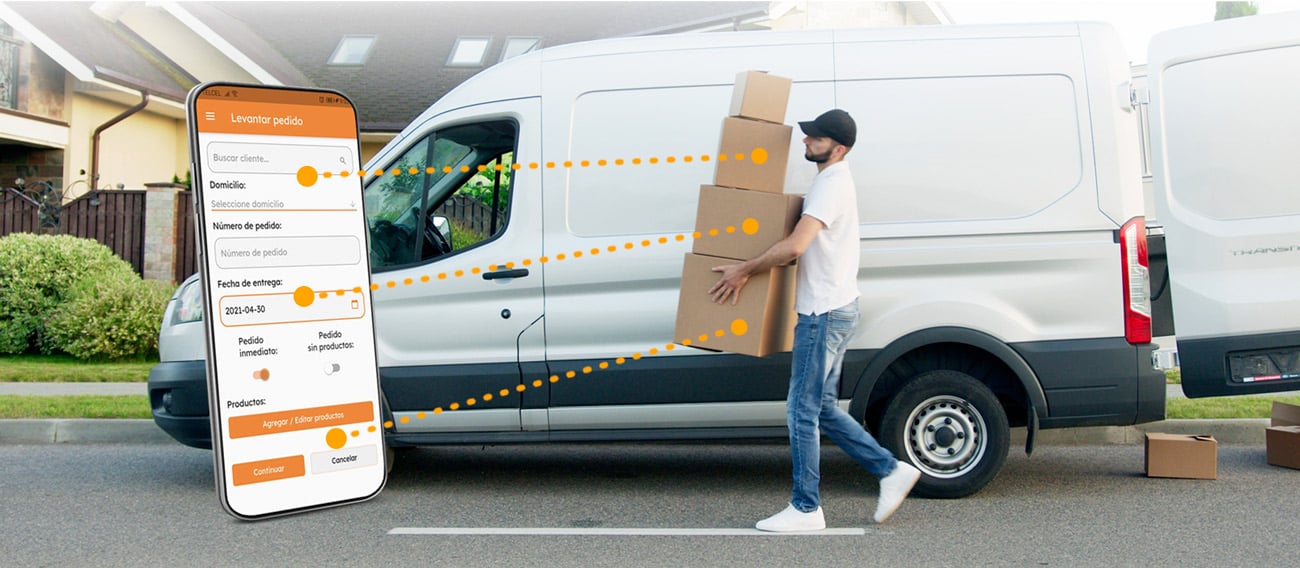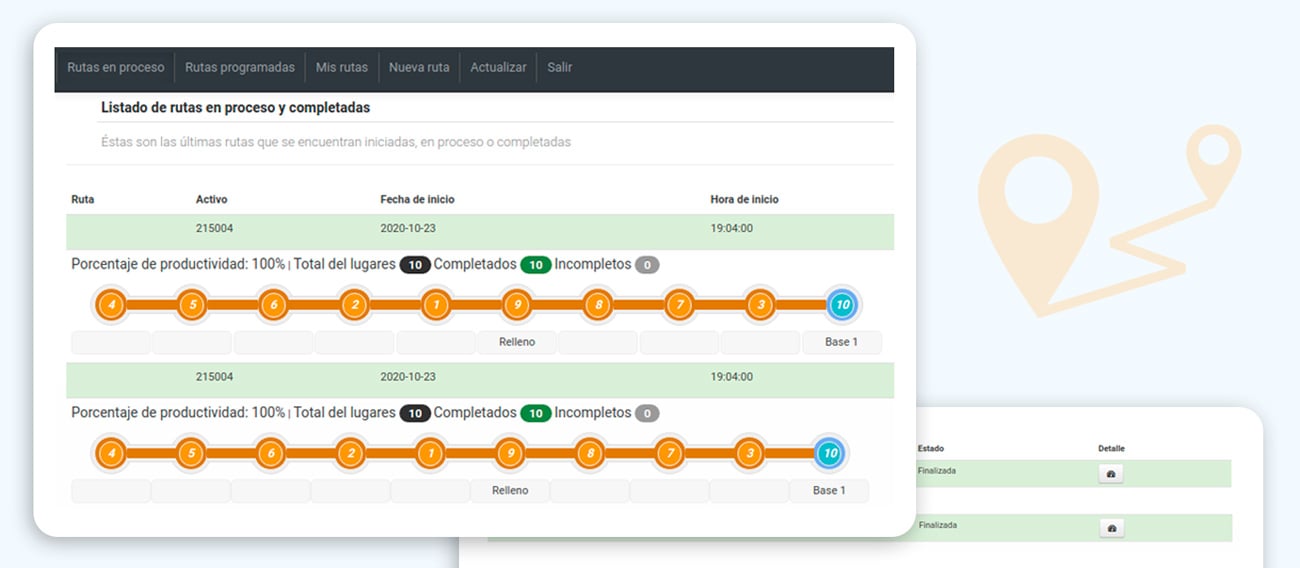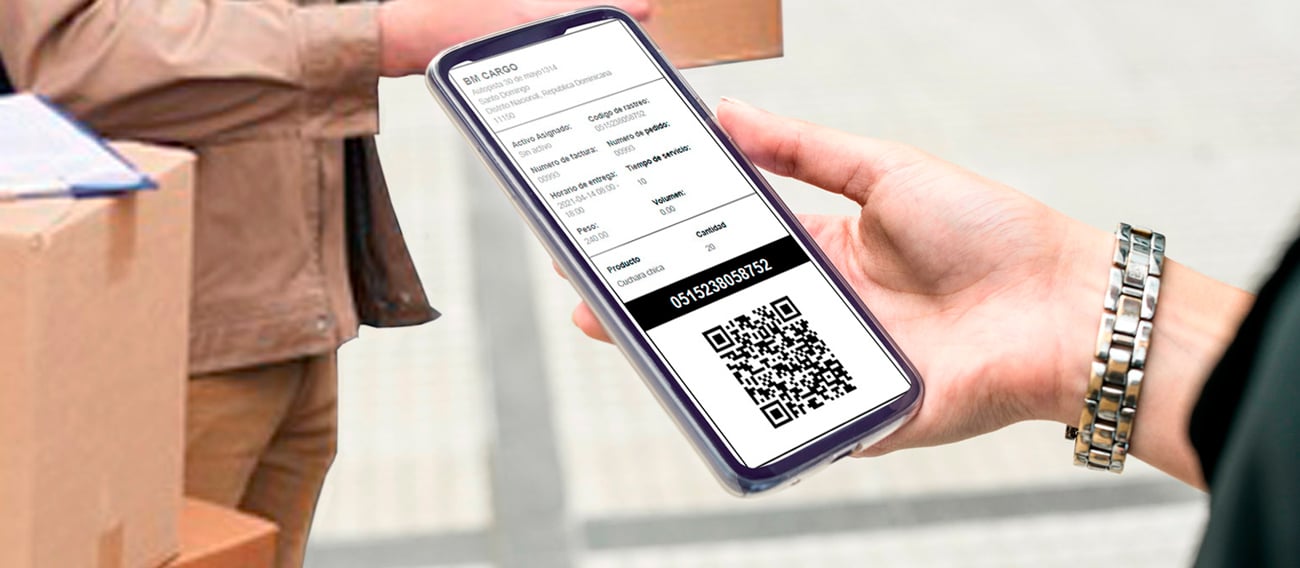There are multiple benefits to integrating specialized technology in the logistics industry, which directly impacts the company's productivity. Therefore, any business with the goal of growing and gaining competitiveness in the market in the medium and long term cannot exclude it from its processes. Learn how this can give you a competitive advantage and allow you to offer a more comprehensive value proposition to your customers.
The Importance of Providing High-Tech Services in the Logistics Industry
The importance of technology in logistics is decisive. Through its implementation, greater efficiency and profitability are achieved, which in turn results in lower costs for both your customers and users.
In addition, technologies in the sector enable the realization of many other benefits, including:
- Cost reduction in the short, medium, and long term.
- Risk factor prevention.
- Process automation.
- Process visibility and traceability.
- Adjustment of supply chain phases.
- Informed and swift decision-making.
- Improved response times.
- Greater customer loyalty based on user experience.
According to the study 2024 Wearehousing Vision by Zebra Technologies, 77% of respondents agree that increasing the number of technology-equipped workers is the best way to introduce automation in logistics processes.
Benefits of Integrating Technology in the Logistics Industry
When we think about the benefits of implementing new technologies in your customers' logistics, we find that they are numerous and diverse. Learn about the main ones below in order to adopt the one that best suits their needs.
Comprehensive Operation Management
Speaking of supply chain management in logistics, it refers to the proper handling of the processes involved in delivering products from a distribution center to the end customer's hands.
Regarding the last-mile stage, the delivery process is critical due to the high number of resources it consumes and the commitment required to provide excellent service.
Consumers are increasingly demanding and expect immediate information through various channels. This demand can be related to the product's features or the delivery process tracking.
However, offering multiple communication channels is not enough. Currently, it is necessary to involve consumers in a way that makes them feel an important part of the entire sales and delivery process.
The solution is to have an effective tool that integrates processes into a digital platform, allowing management, control, and real-time information about the operation. This is crucial for both the company and end customers to ensure that communication remains unbroken at all stages.
Delivery Optimization

Measuring the performance of the logistics chain helps improve the process and achieve proper product management. This allows for deliveries with minimal errors and meeting the most critical aspects for customers.
A well-formulated measurement strategy delivers reliable data on the relationship between projected objectives and company's achieved goals. In other words, it allows anticipating future demands and new business models.
According to the study 2024 Wearehousing Vision by Zebra Technologies, 46% of respondents mentioned faster delivery to end customers as the primary factor driving growth plans.
Distribution State Control
Logistics is a sequence that occurs in different spaces simultaneously and is constantly in motion. Therefore, it's essential to have a platform that makes processes transparent, integrates them, and manages them easily and quickly.
At this point, choosing the right technology is crucial, ensuring that the investment contributes to business profitability and adds value in terms of the customer experience. When it comes to benefits, integrating technology into the distribution chain primarily enables:
- Tracking.
- Location.
- Traceability.
- Efficient fleet management.
All these functionalities impact, for example, the performance of the logistics operation, the speed of processes, error minimization in management, among other benefits.
Furthermore, it's a reality that while companies need to know what happens with their fleet and goods once they leave the distribution center, customers demand channels to track the status of their orders in real time. This significantly reduces uncertainty.

Performance Analysis
The best way to identify pain points in logistics processes and carry out appropriate optimizations is to have a comprehensive view of operations performance.
However, data collection, recording, and interpretation are complex tasks that require time and resources. Moreover, they can be subject to harmful margins of error and data capture inaccuracies, and these are some of the difficulties that technology can solve.
For this reason, the selected performance indicators (KPIs) should be determined in relation to the company's characteristics and the sector that requires analysis. In other words, it's a set of indicators whose value is related to the group of data it will be applied to.
Constant Communication with the Customer

In logistics, what aspects contribute to the customer experience? Undoubtedly, immediacy in obtaining information and quick problem resolution. In other words, new consumers expect to track the arrival of the product with information until its delivery.
Integrating technology into logistics processes facilitates transparent execution of constant communication with customers.
In fact, maintaining constant communication is crucial for building a strong and long-term relationship between customers and the company. At this point, technology is an essential ally to improve operational performance, deliver a great experience to customers, and gain competitiveness in the market.
The less uncertainty and communication gaps there are, the more capacity you gain to quickly and effectively resolve contingencies. Ultimately, it's about facing contingencies without jeopardizing logistics performance.
Now you can see how facilitating communication between your customers and their customers is also crucial for your business.
Conclusion
Logistics management is a process that involves resources, people, technologies, inventories, and various flows. All of these are necessary to ensure timely delivery, along with a great service experience.
For it to be efficient, it is necessary to integrate and coordinate all processes in such a way that higher levels of production and satisfaction are achieved.
Integrating technology like that provided by RedGPS not only digitizes the process and makes it simpler but also makes it possible to identify weaknesses and make the necessary changes to achieve a higher return on investment, while also retaining users with solutions that meet their expectations.
You Might Also Be Interested In 

What should you do if a GPS tracker stops working? |

5 Benefits of Real-Time GPS Tracking |

GPS Tracking Focused on Security: Guide 2023 |








